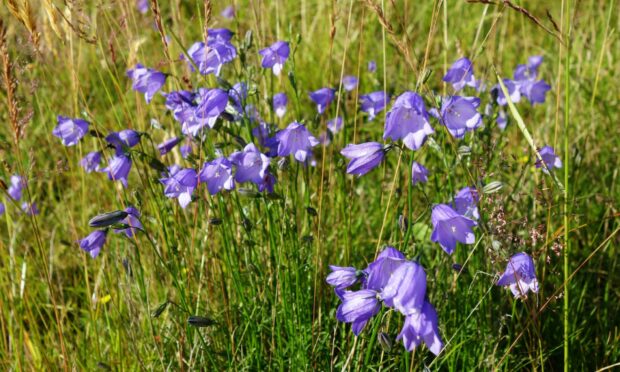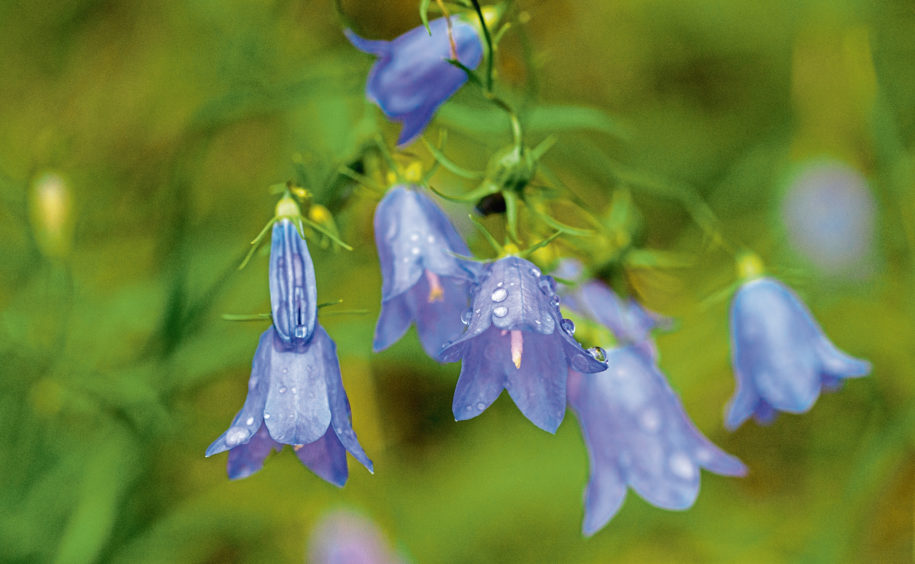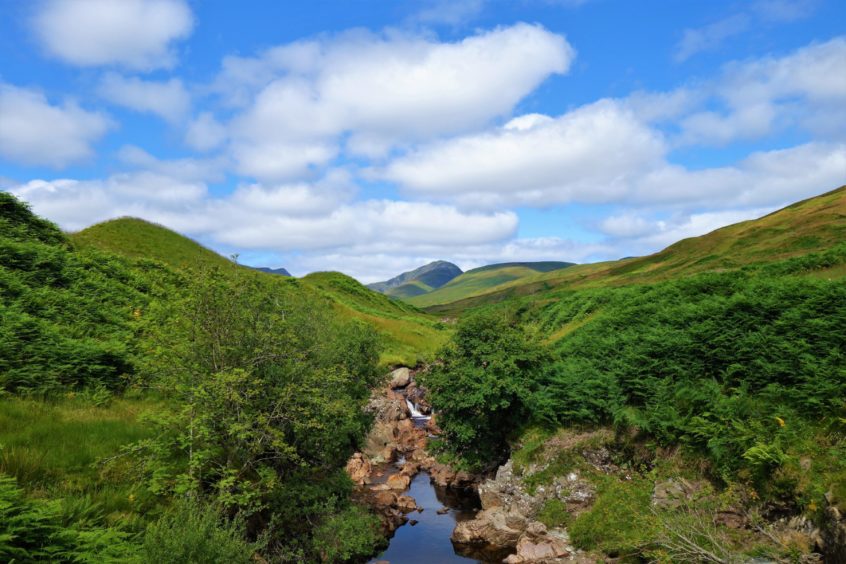It might seem bizarre that one of our most beautiful wildflowers delivers a twinge of sadness, but harebells do that to me, for they are one of our end-of-season plants, and their nodding pastel-blue bells are a telling reminder that summer is fast approaching its final swansong.
Such thoughts drifted across my mind on a walk in Glen Artney in southern Perthshire last week, but it was only a fleeting moment of melancholy, for the beauty of their flowers was uplifting.
The harebell – the bluebell of Scotland – is engrained in country folklore and associated with magic and witchcraft, carrying such names as “witches’ thimbles” and “fairy bells”.
They were also sometimes known as “aul man’s bells”, where the aul man (old man) is a reference to the Devil.
In parts of Scotland the plant was said to be held with dread and “commonly left unpulled”.
Why this benign flower should hold such mythical fear is hard to fathom – yet perhaps that is where the root of my initial unease at seeing these Glen Artney harebells stemmed from.
Underworld
The underworld was making its presence felt in Glen Artney through another abundant flower – Devil’s-bit scabious. It is a long-stemmed flower of exquisite beauty, with its intricate convolutions and whorls.
It is a plant with renowned curative properties, including for ailments such as sore throats and respiratory problems.
The roots of Devil’s-bit scabious are stubby, and according to folklore, this is because the Devil was so angry at the plant’s beneficial medicinal properties, he bit away part of the root, hence the name.
In among swards of creeping thistles, carder bumble bees buzzed, eagerly seeking out nectar.
With their warm-brown furry bodies, carders are most attractive bumblebees and are so-named because they knit grass and moss together when making their ground nests.
By a thick stand of conifers near the Allt an Dubh Choirein burn, a constant, gull-like mewing ebbed and flowed in an almost hypnotic fashion.
Buzzards
It was a family of buzzards, and sometimes they soared above the trees on wide-splayed wings before quickly descending again.
Buzzards are one of our commonest birds of prey; the key to their success lying in their ability to exploit a wide variety of habitats.
It is a versatile predator will take mammals up to the size of a small rabbit, but much smaller creatures such as beetles are also hunted, and it will devour earthworms.
On the top of a boulder by the track edge beneath the low top of Meall Odhar, a buzzard pellet shone out at me.
Indigestible prey material such as fur and bones are regurgitated by birds of prey to form these pellets.
I gently teased it apart with my fingers and within its bounds were the skull fragments and jaw bones of several field voles.
The feeding here was obviously bountiful and this family of buzzards were clearly intent on making hay while the sun still shone.
INFO
There are plenty of late season flowers to enjoy in the Perthshire and Angus hills at the moment. Look out for the white blooms of sneezewort, yellow-petalled tormentil, and the pink fronds of ragged robin in damp flushes.












